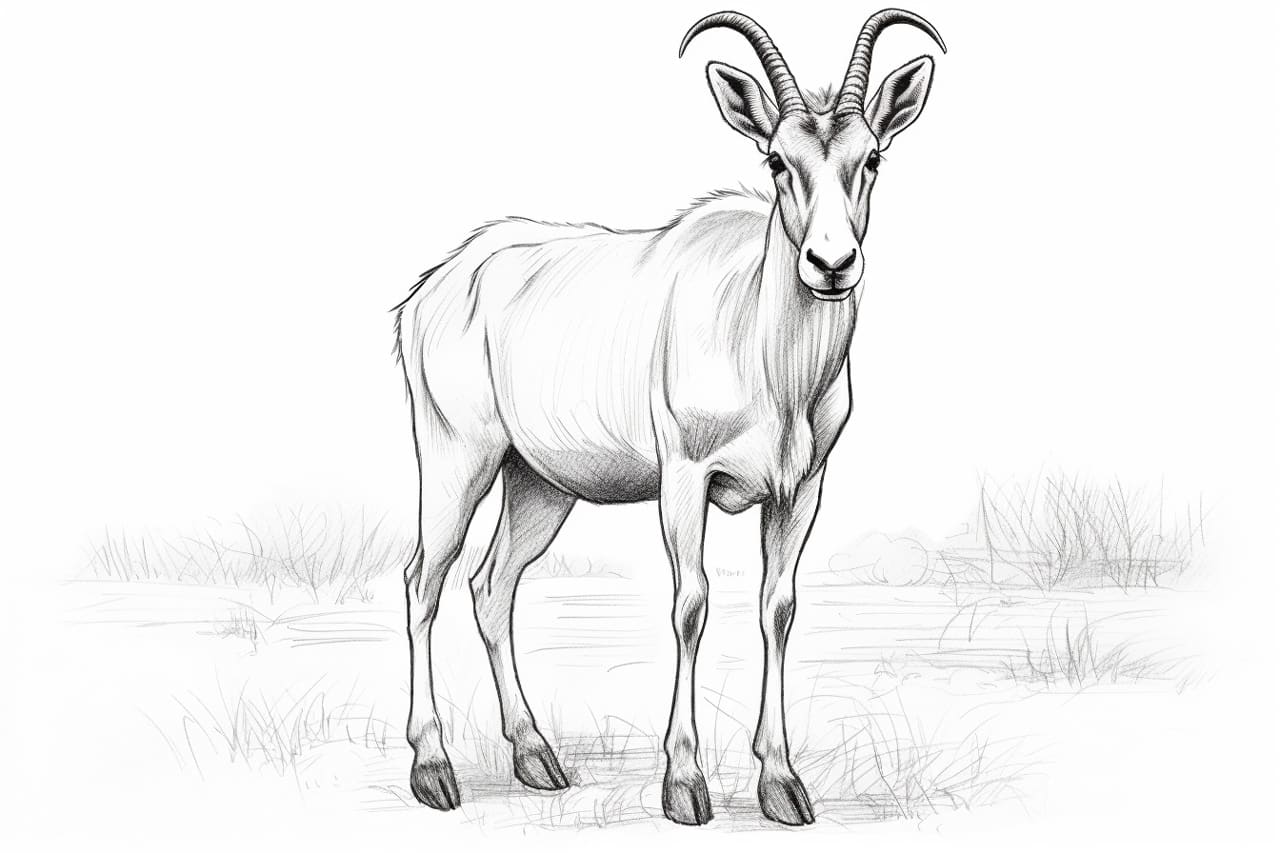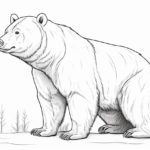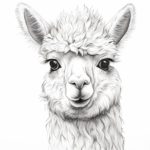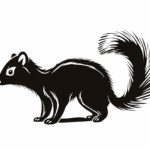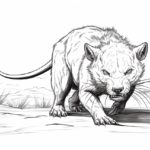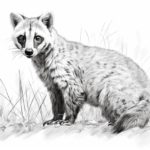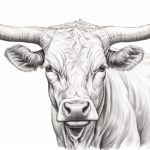Welcome, aspiring artists! Today, we embark on a creative journey to capture the unique beauty of the Saiga Antelope on paper. With its distinctive bulbous nose and elegant curved horns, the Saiga Antelope is a fascinating subject that offers a wonderful opportunity to hone our drawing skills. Join me as we explore the graceful contours and intricate details of this enigmatic creature, learning valuable techniques and tips along the way. Let’s unleash our artistic talents and bring the spirit of the Saiga Antelope to life through the power of drawing!
Materials Required
To draw a Saiga Antelope, you will need the following materials:
- Drawing paper or sketchbook
- Pencils (preferably a range of graphite pencils from 2H to 6B for shading and detailing)
- Eraser (both a kneaded eraser and a regular eraser for precision erasing)
- Blending tools (such as blending stumps or tortillons)
- Reference photo of a Saiga Antelope for accuracy in drawing details
- Optional: Colored pencils or markers if you want to add color to your drawing
These materials will help you create a detailed and realistic drawing of a Saiga Antelope.:
How to Draw a Saiga Antelope: a Step-by-step Guide
Step 1: Gather Reference Images
Start by collecting reference images of Saiga Antelopes from different angles. This will help you understand the animal’s anatomy, proportions, and distinctive features.
Step 2: Sketch the Basic Shapes
Begin by lightly sketching the basic shapes that make up the Saiga Antelope’s body. Use simple shapes like circles and ovals to outline the head, body, legs, and horns.
Step 3: Add Details
Once you have the basic shapes in place, start adding details to your drawing. Focus on the unique features of the Saiga Antelope, such as its large eyes, distinctive nose, and curved horns.
Step 4: Define the Face
Pay special attention to the face of the Saiga Antelope. Add more detail to the eyes, nose, mouth, and ears. Capture the gentle expression and unique features of this animal.
Step 5: Refine the Body
Continue refining the body of the Saiga Antelope, paying close attention to the proportions and muscle structure. Add fur texture and markings to make your drawing more realistic.
Step 6: Add Horns
Saiga Antelopes are known for their distinctive horns. Carefully draw the curved horns on top of the head, making sure they are proportionate and symmetrical.
Step 7: Final Touches
Once you are satisfied with the overall look of your drawing, go over the lines with a darker pencil or pen to define the final outlines. Erase any unnecessary guidelines and smudges to clean up your drawing.
Step 8: Shading and Texturing
Add shading to create depth and dimension in your drawing. Pay attention to light sources and shadows to make the Saiga Antelope look more realistic. Use hatching and cross-hatching techniques to add texture to the fur.
Step 9: Evaluate and Adjust
Take a step back and evaluate your drawing. Make any necessary adjustments to proportions, details, or shading to enhance the overall quality of your artwork.
Step 10: Sign and Date
Once you are satisfied with your drawing, sign your name and date it to mark your completion of the Saiga Antelope artwork. Display your drawing proudly or share it with others to showcase your artistic skills.
Conclusion
In conclusion, I want to commend you for your impressive depiction of the Saiga Antelope. Your attention to detail and skillful technique truly bring this unique animal to life on the page. Remember that every artwork is a journey of growth and learning, and your dedication to honing your craft is evident in the beautiful piece you have created. Continue to explore different subjects and techniques, and don’t be afraid to push your boundaries as an artist. Your creativity and passion shine through in your work, and I have no doubt that you will continue to produce stunning pieces in the future. Keep up the fantastic work!
Fun Facts About Saiga Antelopes
Sure! Here are some fun and interesting facts about Saiga Antelopes:
- Saiga Antelopes have a distinctive and unique appearance with a large, bulbous nose that helps filter out dust during their migrations on the dry steppes of Central Asia.
- They are known for their incredible endurance and ability to migrate long distances, sometimes covering hundreds of kilometers in search of food and water.
- Saiga Antelopes are considered a critically endangered species, with their population declining drastically in recent years due to hunting, habitat loss, and disease outbreaks.
- These antelopes have an important ecological role in their native habitats, as their grazing behavior helps maintain the grasslands and prevent the spread of wildfires.
- Saiga Antelopes have an interesting social structure, with males forming separate groups from females and young during certain times of the year, such as during the mating season.
- Their horns are prized for their medicinal properties in some traditional Asian medicine practices, leading to illegal poaching and trade of Saiga horns.
- Saiga Antelopes are known for their swift running ability, which helps them evade predators such as wolves and foxes in their harsh habitats.
- These antelopes are herbivores, mainly feeding on grasses, herbs, and shrubs in the arid and semi-arid regions where they live.
- Saiga Antelopes have been the focus of conservation efforts in recent years, with initiatives aimed at protecting their habitats, reducing poaching, and raising awareness about their plight.
- Despite their challenges, Saiga Antelopes are resilient creatures that continue to capture the interest and admiration of researchers, conservationists, and wildlife enthusiasts around the world.
Suggestions for Scenes and Settings for Saiga Antelope Drawings
Certainly! Here are some specific suggestions for scenes and settings for drawings of Saiga Antelope:
- Saiga Antelope in their natural habitat on the vast grasslands of Central Asia, with rolling hills and sparse vegetation in the background.
- A group of Saiga Antelope migrating across a dry desert landscape, with sand dunes and distant mountains in the background.
- A close-up portrait of a Saiga Antelope grazing peacefully in a meadow filled with wildflowers.
- A family of Saiga Antelope foraging for food near a tranquil river, with lush greenery and trees in the background.
- A dramatic scene of Saiga Antelope fleeing from a predator in a rugged mountainous terrain, with cliffs and rocky outcrops.
- A serene depiction of Saiga Antelope resting under the shade of a tree in a peaceful forest setting.
- A dynamic composition of Saiga Antelope running across a snowy landscape during winter, with snow-covered trees and a clear blue sky.
- An artistic interpretation of Saiga Antelope blending into their environment in a camouflage-like setting, such as a field of tall grass or reeds.
- A mystical scene of Saiga Antelope silhouetted against a colorful sunset sky, with silhouettes of other wildlife in the background.
- A futuristic interpretation of Saiga Antelope in a sci-fi setting, such as a technologically advanced cityscape with futuristic buildings and flying vehicles, highlighting the need for wildlife conservation.
Feel free to get creative and use these suggestions as inspiration for your drawings of Saiga Antelope!

